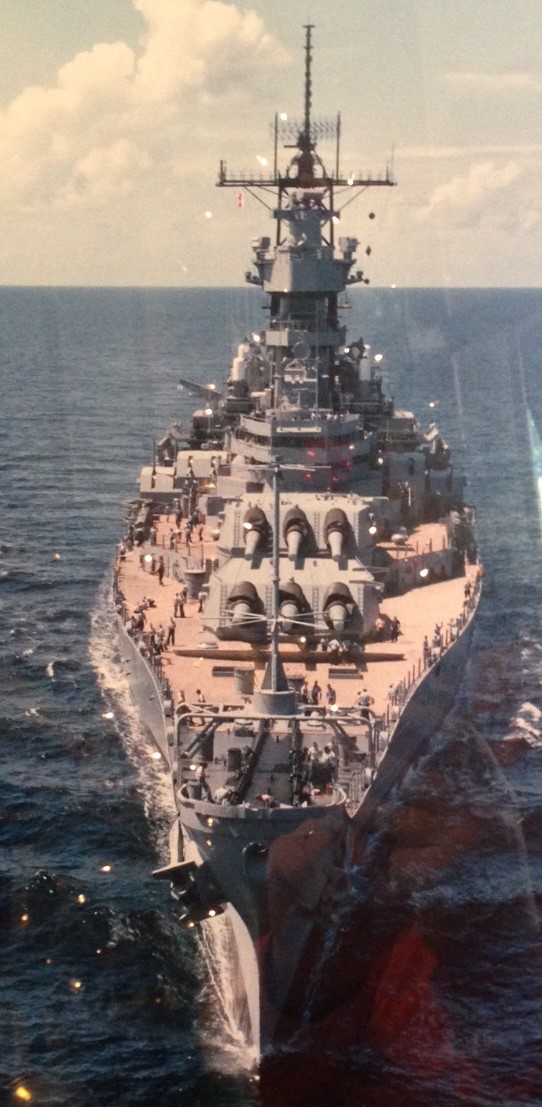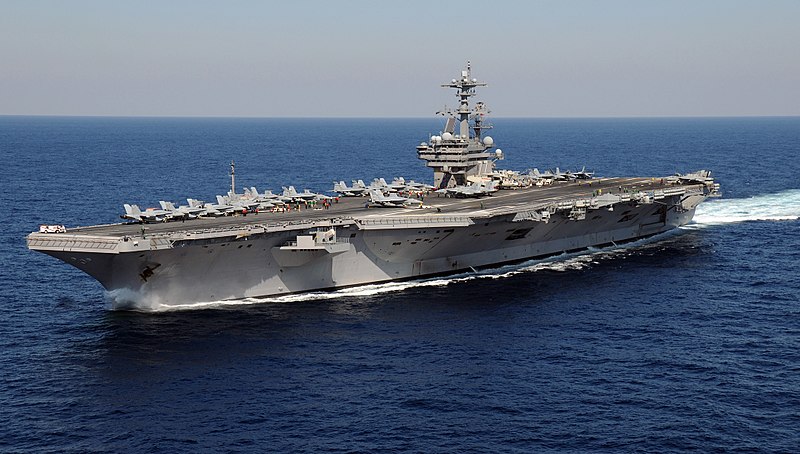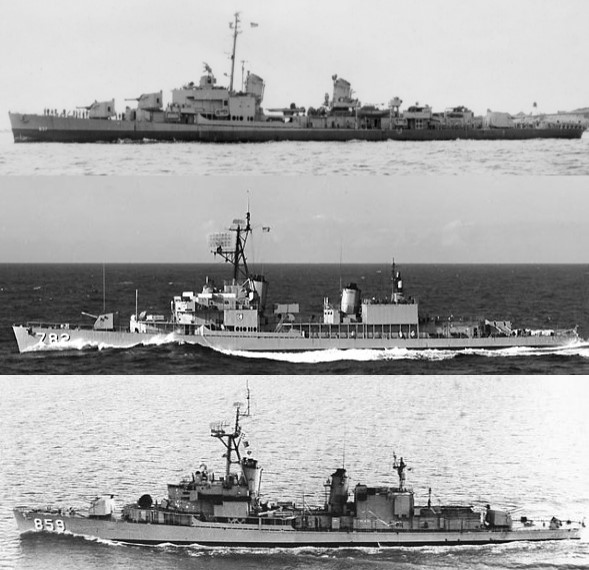I've been asked several times about classes. A class of ships is a group of ships all built to the same set of blueprints, at least in theory. As with most naval matters, things are more complicated. In some cases, members of a class are essentially identical, while in others, they're totally different.

Iowa, New Jersey and Missouri as completed
As you'd probably expect, we'll start with the Iowas. All four ships were built to fairly similar plans. The biggest structural differences are Iowa's three-level conning tower, intended to house an admiral and his staff in battle,1 and the heavier armored bulkheads on the ends of the citadel in Wisconsin and Missouri. The most obvious external differences early on were in the bridgework. Iowa commissioned with an open bridge around the front of the conning tower, like the earlier battleships, while New Jersey entered service with a circular enclosed bridge wrapped around the front of the conning tower. Missouri and Wisconsin had a square bridge, which Iowa and New Jersey received during refits.2

The picture of Wisconsin I identified3
When reactivated for Vietnam, New Jersey received a distinctive structure high in the tower for ECM systems. This structure was reused in the 80s, while the other three ships all had very similar air-defense levels. The other differences are minor. There were often small differences in the antenna layout, and some of the fittings differed. I once was sent bow-on picture of one of the ships in the 80s, from an angle where no markings were visible. New Jersey was easily eliminated, due to the differences at the air defense level. I then took a careful look at the ventilators on the forecastle, and was able to eliminate Iowa because they added more in the later ships. I was then stumped for a while, but eventually realized4 that the very tip of the bow differed slightly due to the way they'd removed the Oerlikons, and nailed it down as Wisconsin. On a slightly less geeky level, when watching the movie Battleship5 I noticed that the ladders to the 05 level on Missouri were backwards relative to those on Iowa.

USS George H W Bush, the last unit of the Nimitz class
To answer the question more generally, some classes are nearly identical, while others are totally different from each other, depending on how they were constructed. Some of the mass-produced escorts of WWII were essentially built on an assembly line, and thus were practically identical. The Nimitz class, on the other hand, saw significant modifications for each unit, to the point that it's almost 10 distinct single-ship classes. This is reasonably common in classes built over a period of time, as improvements are made. Depending on the scale of these improvements, the resulting groups are often called subclasses or flights. And different yards just fit ships out slightly differently. In terms of fine details, it's normal for there to be enough difference among members of a class of battleships to be able to tell them apart in photos.

Three different versions of the Gearing class destroyer: Original, FRAM I, FRAM II6
The situation gets more complicated when refits enter the picture. Even leaving aside cases in which a ship is converted to do something totally different from its original purpose, variations in equipment build up as ships pass through the yards.
There's not a simple answer to questions of this type, unfortunately, but hopefully everyone is now confused on a higher level than they were.
1 This also made it impossible to mount a quad Bofors on top of Turret II, as the other ships were fitted with, and Iowa got 3 20mm Oerlikons there instead. Putting the Bofors there is a very common mistake in models of the ship, including the one in the Iowa state capitol. ⇑
2 A few more changes would have come to the last two members of the class, had they been competed, such as an improved TDS and more extensive use of welding. ⇑
3 Thanks to Jeff Wreidt for the image. ⇑
4 Actually, read in Dubious & Ghastly (Dulin & Garzke). ⇑
5 Which is horribly inaccurate, but also has its moments. I wish we could have done that with Iowa. ⇑
6 The FRAMs (Fleet Rehabilitation and Modernization) were refits to give greater anti-submarine capability in the 50s and 60s. ⇑

Comments
How did "Destroyers" and "Cruisers" become distinct classes, and how did they get their respective names?
They started off as very distinct classes. Cruisers are the descendants of the sailing frigates, intended for long, unaccompanied cruises (hence the name). Destroyers developed around 1900 from the torpedo boat destroyer, intended to hunt torpedo boats and protect the battle line. They later took over as the main torpedo craft. As recently as WWII, they were very different. Destroyers were about 2,000 tons, cruisers 10,000. They've only merged recently.
Cool! Thanks for explaining the name "cruisers", I've been wondering about that (and probably some others I can't remember right now...)
(I also see why "cruiser" is one of the naval words that frequently gets used for spaceships in stories..)